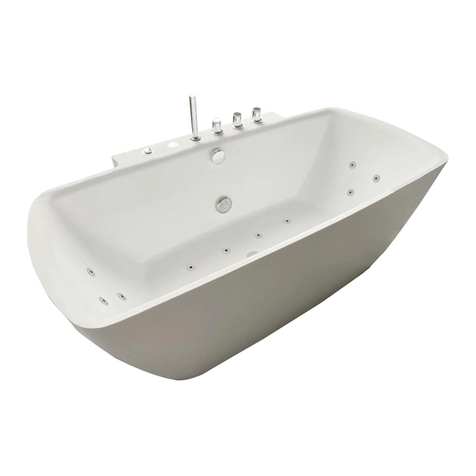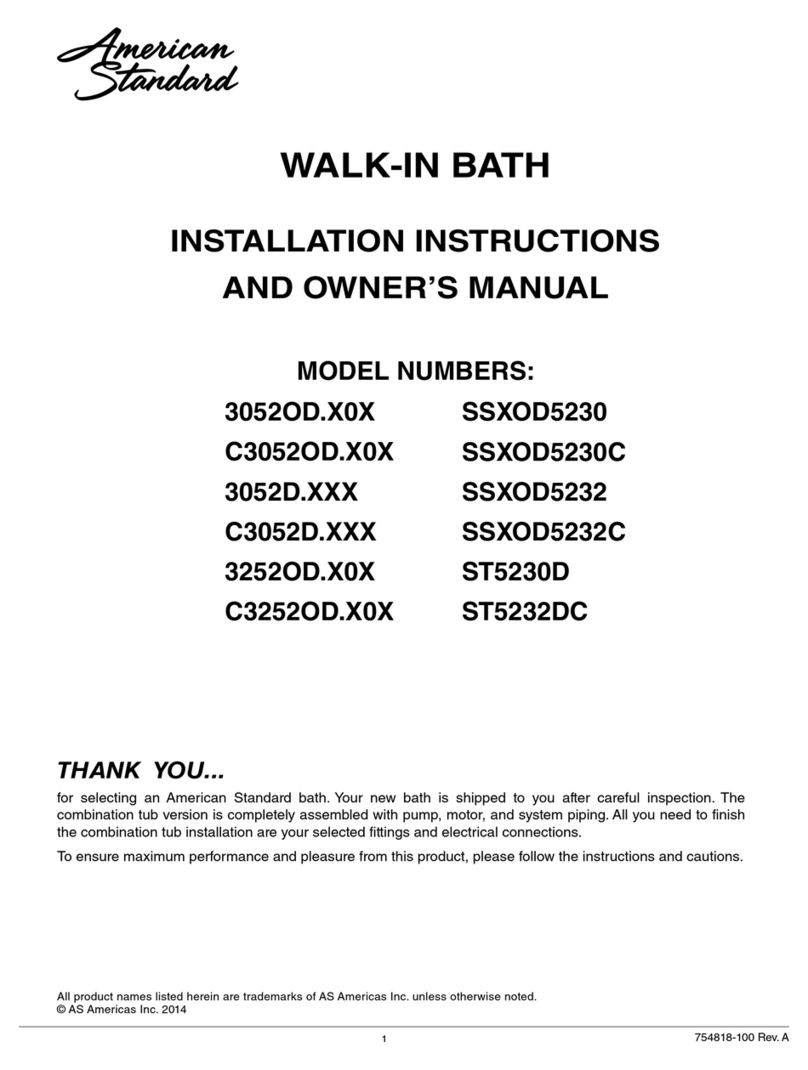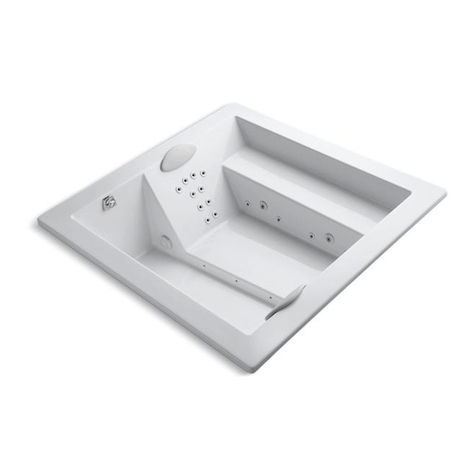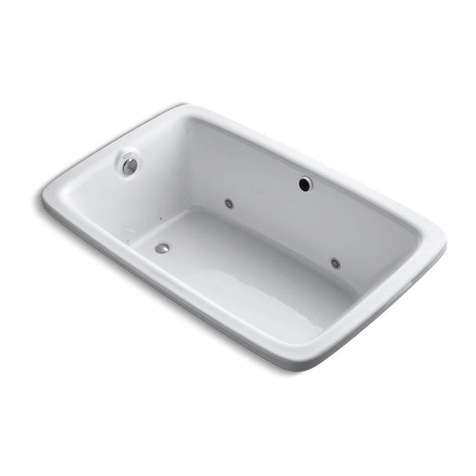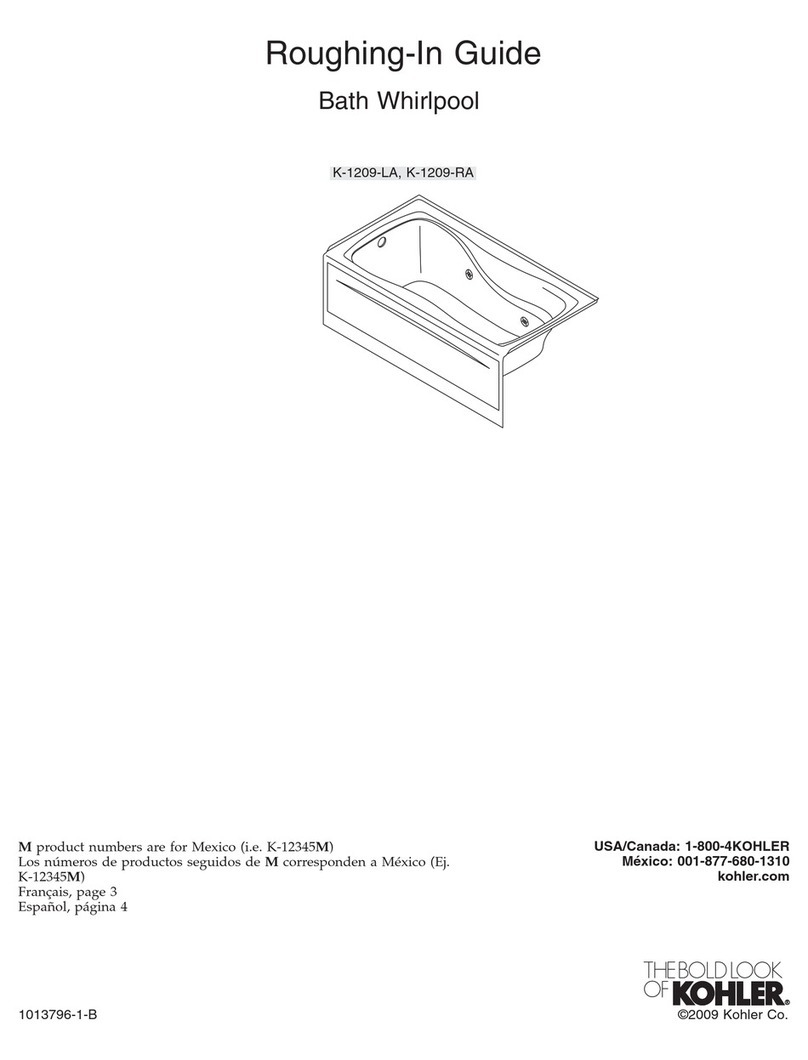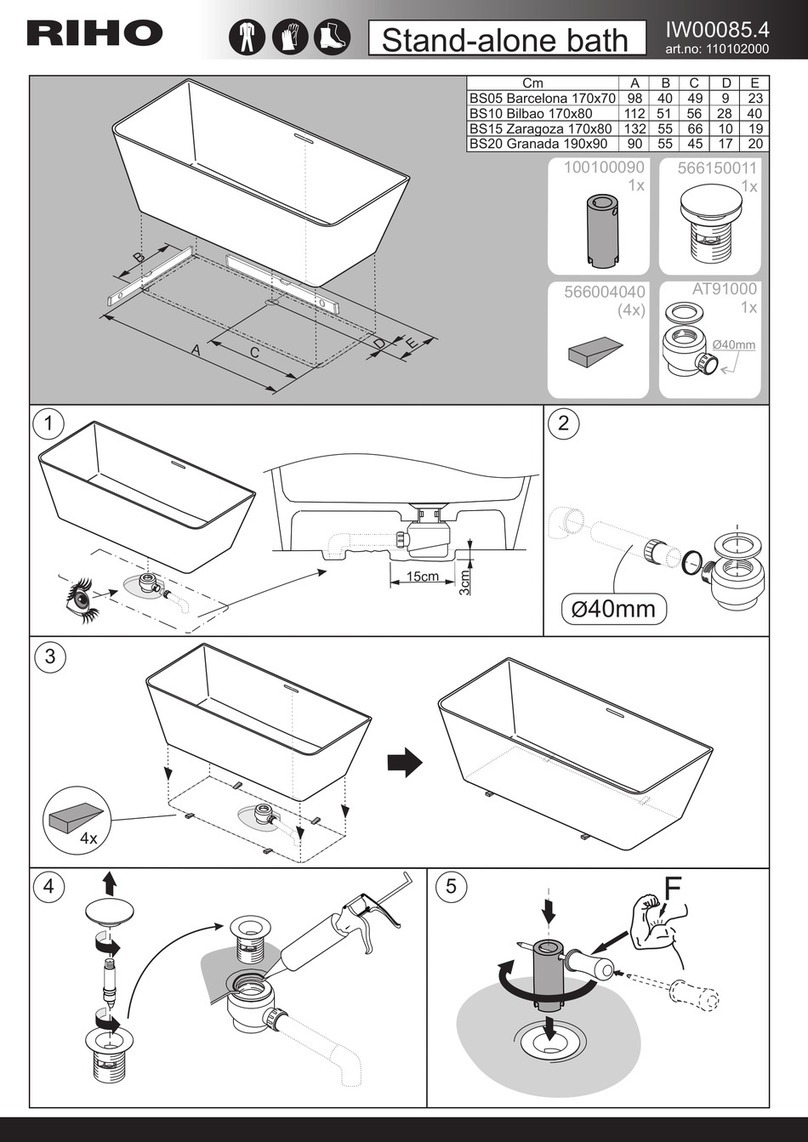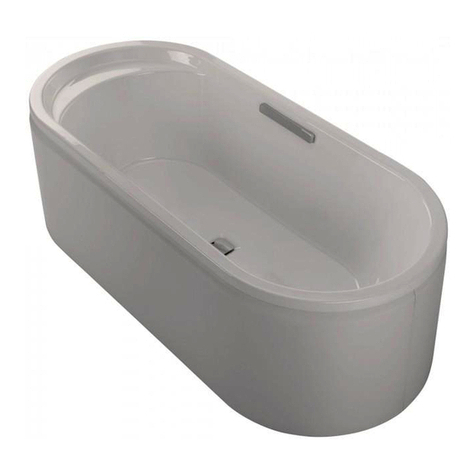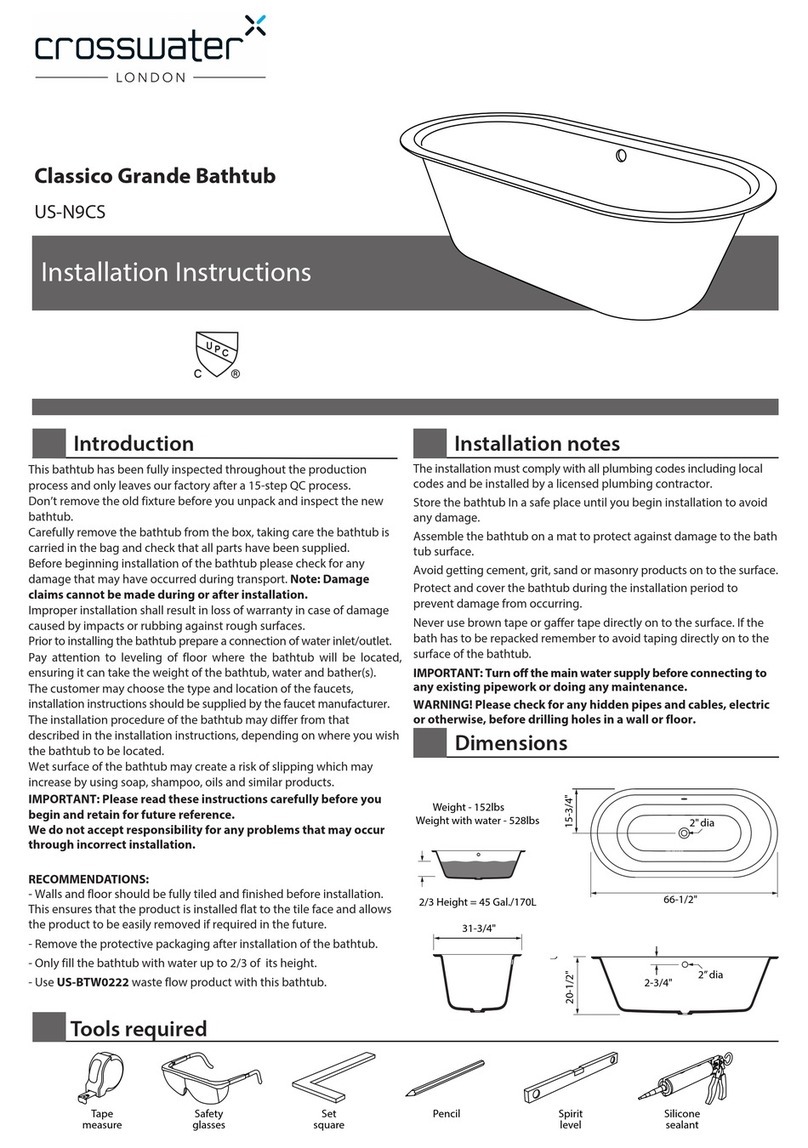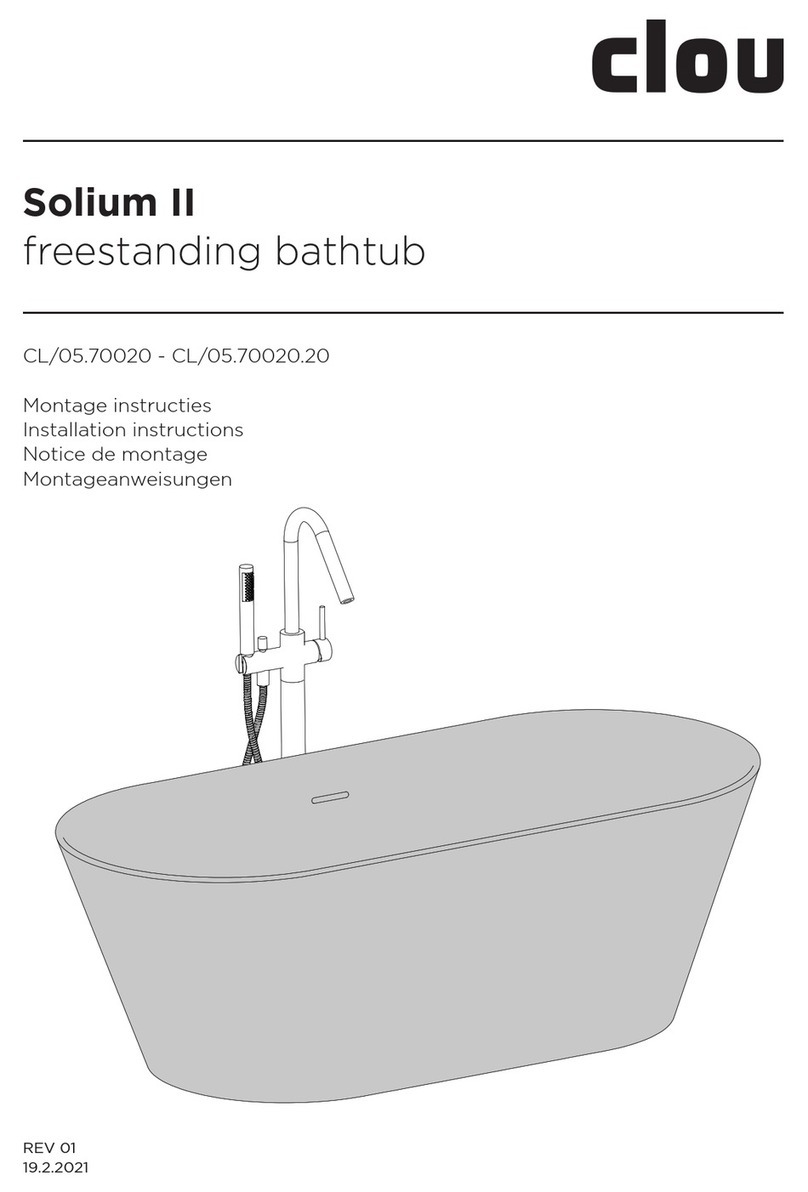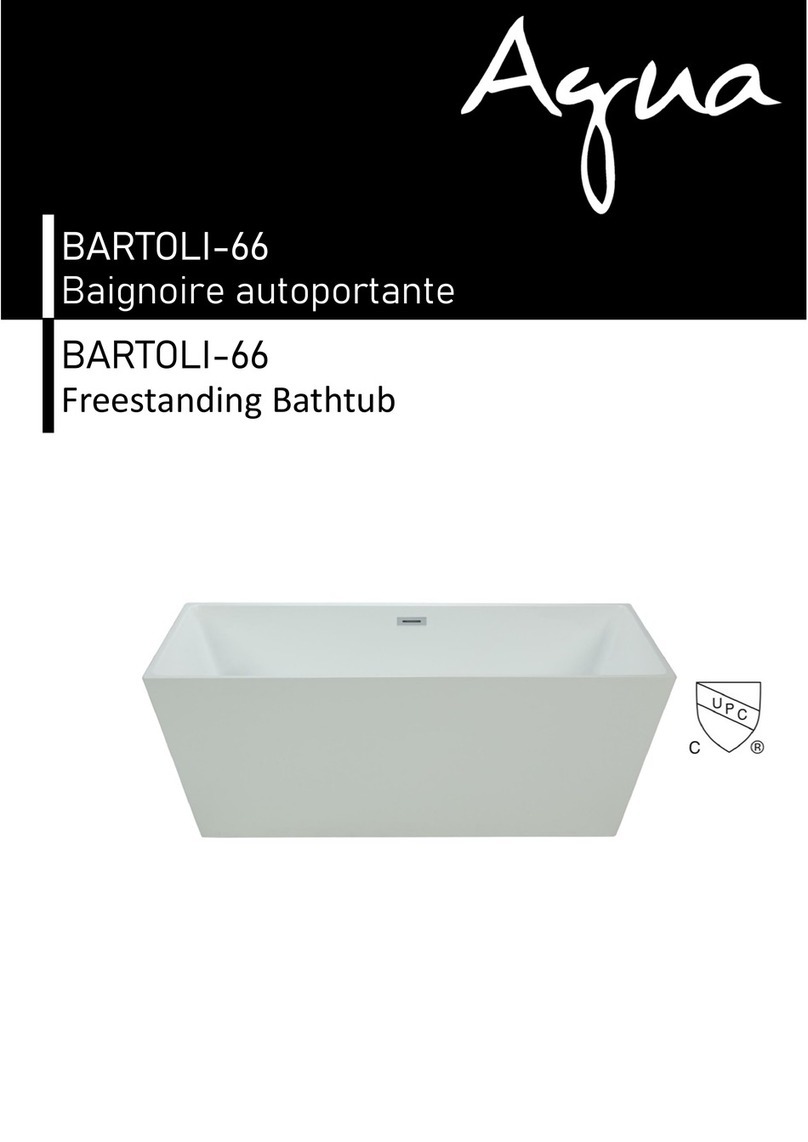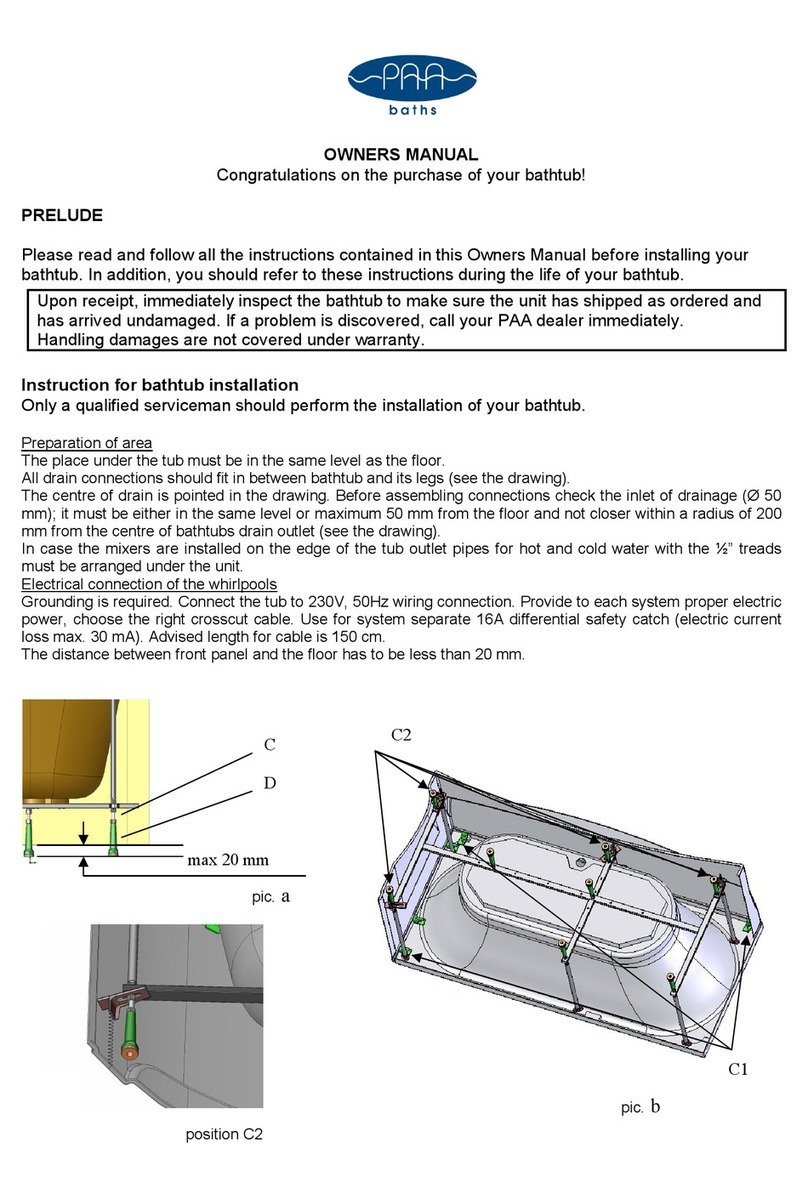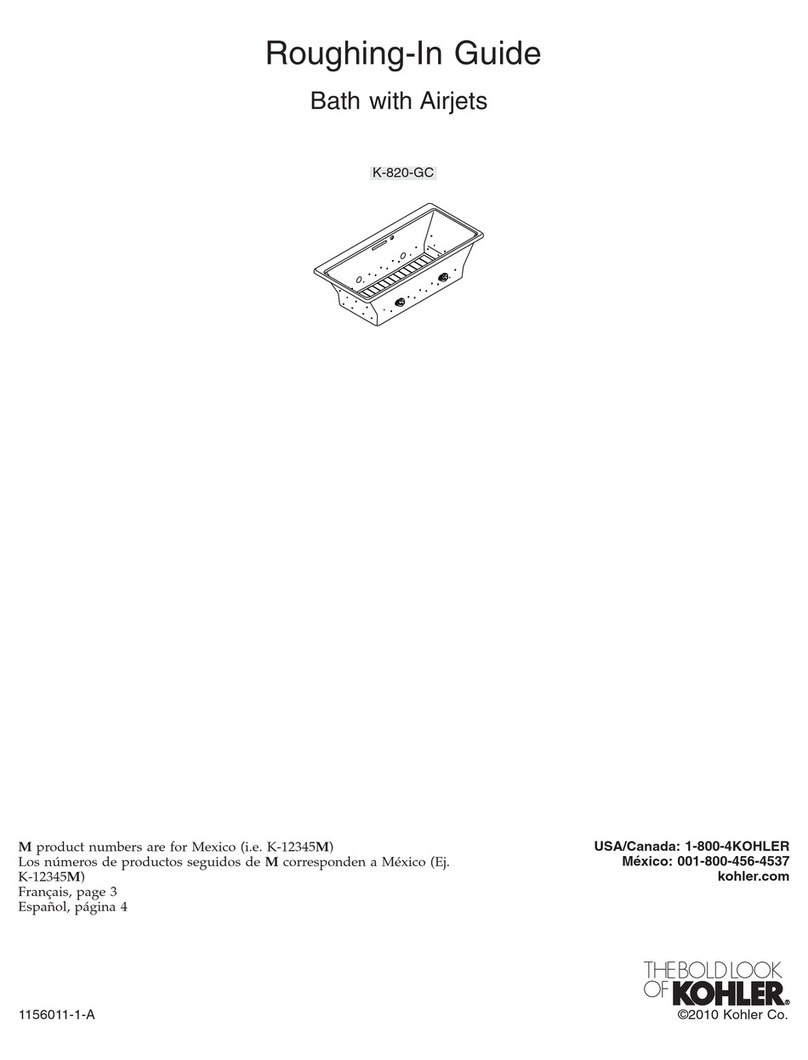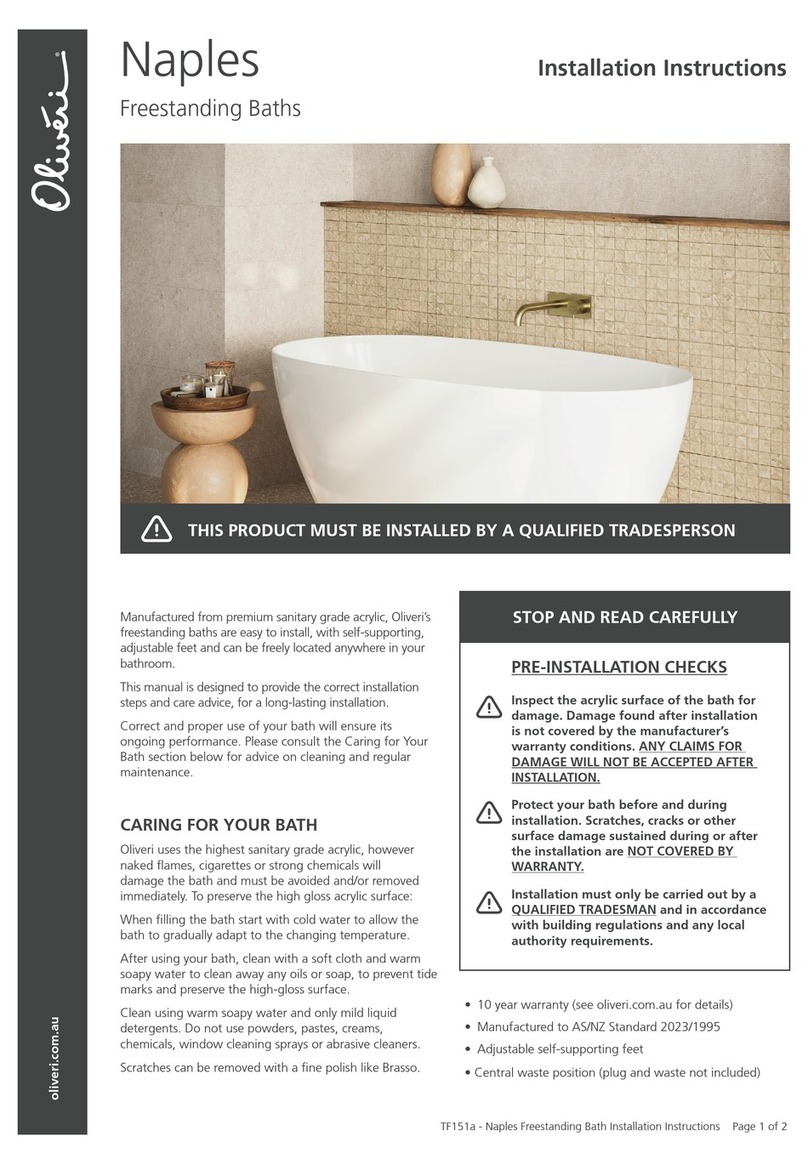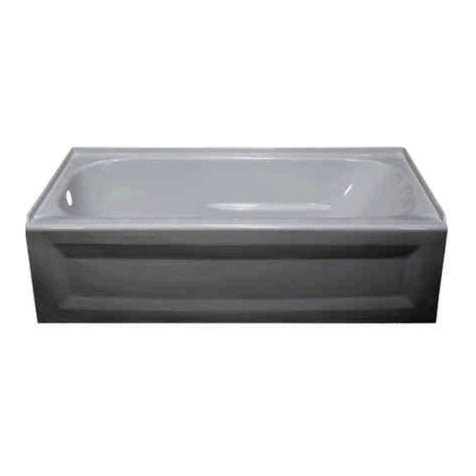
Montageanleitung und Wartung von Akrylatbadewannen RIHO
Alle Badewannen der Marke RIHO werden aus Akrylat (PMMA) hergestellt und sind durch
Polyester mit Glasfaser verfestigt. Der Badewanneboden ist mit Sperrholz bewehrt. Akrylat ist
ein synthetischer Stoff im ganzen Schnitt durchgefärbt. Die Eigenschaften des Akrylates
gewähren einen maximalen Komfort bei der Badewannenbenutzung unter der Voraussetzung,
dass Sie sich nach den Anweisungen zur Installierung und den Forderungen zur Wartung der
Wanne richten werden.
VORGANG:
1) Vor Installierung entfernen Sie die Kartonverpackung und die dünne Schutzfolie von der
Badewanne und kontrollieren Sie, ob die Wanne nicht beschädigt ist, ob sie keinen Materialfehler
oder Produktionsfehler aufweist. Schützen Sie die Badewanne während der Installierung auf
geeignete Art (z. B. Karton, Decke, Blasenfolie,...). Nach der durchgeführten Installierung
bezieht sich die Garantie der Gesellschaft RIHO nur auf versteckte Materialfehler.
2) Vor der Installierung der Badewanne muss der Anschluss von Warm- und
Kaltwasser und der Abfluss installiert sein (siehe Bild mit
empfohlener Distanz).
3) Der Einbau der Badewanne muss in dem schon mit Verkleidung oder
Wandputz, der mindestens 10cm unter den Badewannenrand reicht,
fertiggestellten Raum durchgeführt werden. Die Badewannenkante kann mit einem
Dämmungsband versehen werden.
4) Der Fußboden unter der Badewanne aus harter nichtelastischer Oberfläche muss eben sein.
5) Die Badewanne muss mit den Originalstützen von RIHO installiert werden – gehen Sie nach
der Montageanleitung für die Montage der Stützen vor.
6) Montieren Sie das Überfall- und Abflusssystem.
7) Füllen Sie die Badewanne bis zum Überfall an, kontrollieren Sie die Dichtheit des
Abflusssystems, kontrollieren Sie den Standort der Badewanne und dichten Sie mit sanitärem
Silikonkittmasse oder Dichtungsband die Fugen um die Badewanne (max. 5 mm).
8) Die Seiten der Badewanne, die nicht an der Wand anliegen, kann man ausmauern oder man
kann Originaldeckplatten von RIHO benutzen. Man kann den gesamten Umfang der Badewanne
verkleiden oder nur einige Teile.
9) Nach dem Einbau muss die Badewanne ohne besondere Baueingriffe nachmontierbar bleiben.
WARTUNG:
Da es sich um ein Material handelt, das keine Poren hat und glatt ist, setzen sich daran praktisch
keine Unreinlichkeiten an. Es genügt, wenn Sie die Badewanne nach Benutzung mit nassem
Schwamm oder Lappen und mit flüssigem Reiniger (kein Scheuermittel) abwaschen.
REPARATUR KLEINER KRATZER UND SONSTIGER BESCHÄDIGUNGEN:
Handelt es sich um kleine Kratzer, genügt es Politur für Chrom und Lacke anzuwenden (ohne
Auflösungsmittel und Granulat). Ist das Ergebnis nicht zufriedenstellend, schleifen Sie die
beschädigte Stelle mit einem wasserfesten Schmirgelpapier der Körnung 600, und danach mit
einem feinen Papier der Körnung 1000. Zum Schluss benützen Sie noch Politur für Chrom und
Lacke und die Badewanne wird wie neu sein.
HINWEIS:
Wenn Sie sich entscheiden selbst die Badewanne zu reparieren, tun Sie dies auf eigene
Verantwortung! Die Möglichkeit der Reparatur ernsthafter Beschädigungen konsultieren Sie
immer mit dem RIHO-Servicecenter.
DER HERSTELLER TRÄGT KEINE VERANTWORTUNG, SOFERN DIE IN DIESER
ANLEITUNG ANGEFÜHRTEN ANWEISUNGEN NICHT EINGEHALTEN WURDEN.
